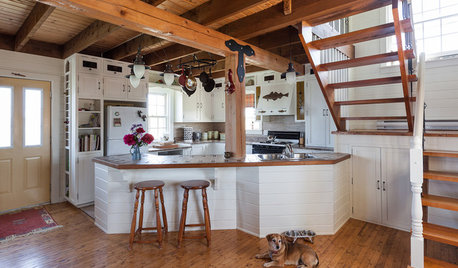Math Madness with GeoThermal vs Hybrid - sanity check please.
I've read through many of the other posts on GeoThermal and have learned a lot, but still can't figure out the best way for me to go.
So, I'm going to go through what I've done in hopes that you all can shed some more light on the topic (Thanks in advance!)
I live in Indiana (near Indianapolis) in what I consider a fairly cookie cutter subdivision. My home is 2400 square feet above ground and a 1450 square foot basement. It was built in 1997 and still has the original and still functioning 3 ton Trane AC (10 SEER) and Trane XE90 Furnace (Natural Gas).
My electric bills: (I don't have the usage handy.. but for the last two months I used 1871 with a $153 bill and 2039 with $164 bill.. hoping that'll help)
Date Base Elect $137.00
1/19/2010 $186.33 $14.33
2/18/2010 $151.84 $14.84
3/18/2010 $137.54 $0.54
4/17/2010 $162.90 $25.90
5/19/2010 $155.49 $18.49
6/17/2010 $155.15 $18.15
7/20/2010 $222.16 $85.16
8/19/2010 $210.19 $73.19
9/17/2010 $223.05 $86.05
10/19/2010 $190.83 $53.83
11/17/2010 $144.12 $7.12
12/17/2010 $149.19 $12.19
$2,088.79 $409.79
What the above is trying to do is to calculate is the amount of my current AC and Heating. So, I took my lowest electric bill (March, thus no AC) and subtracted that from all the months to get a general estimate (but realize that it is still higher than actual AC costs, plus January I took out another $35 for Christmas lights). For gas, I basically reversed the process so I took out about $16/month for gas water heating (and figured $5 for gas cooking) and ended up with $657.
My electric (IPLPower) rate is
My gas rate (Vectren) is
My gas bill looks like this.
BillDate BillingDays GasUsed(Therms) GasCostCharge Dist.&ServiceCharges OtherCharges TotalCurrentCharges Avg.Therms /day AvgDailyTemp. HeatingDegreeDays CoolingDegreeDays
2/2/2011 33 211.3 $115.14 $59.25 $12.19 $186.58 6.4 25 1302 0
1/4/2011 30 208.4 $115.27 $52.37 $11.73 $179.37 6.95 24 1209 0
12/2/2010 32 76.2 $40.43 $32.04 $5.07 $77.54 2.38 45 639 0
11/2/2010 29 13.1 $6.96 $15.40 $1.56 $23.92 0.45 59 177 26
10/4/2010 30 10.1 $5.85 $14.20 $1.39 $21.44 0.34 71 19 207
9/2/2010 32 11.1 $6.78 $14.52 $1.48 $22.78 0.35 79 0 463
8/3/2010 30 9 $5.73 $13.93 $1.37 $21.03 0.3 78 0 414
7/2/2010 33 12.1 $6.96 $14.80 $1.51 $23.27 0.37 76 0 385
6/2/2010 28 15.1 $7.87 $15.70 $1.66 $25.23 0.54 64 94 93
5/4/2010 31 24.2 $12.72 $20.68 $2.34 $35.74 0.78 59 210 31
4/2/2010 31 87.6 $49.80 $36.49 $6.03 $92.32 2.83 44 632 0
3/2/2010 30 210 $120.97 $55.98 $12.38 $189.33 7 24 1202 0
Totals 369 888.2 494.48 345.36 58.71 898.55 28.69 648 5484 1619
I think the average/therm cost is $1.51 over the course of the year, but this is where my math is getting fuzzy.
The GeoThermal quote I have is $18,200 (which includes the $900 holding tank option, but am thinking that I would not see the benefit of using it over the life of the system.. or it would be close). After tax rebates, the cost is $12,470. A similar hybrid solution with a 16 SEER AC and 95% efficient furnace ranged last year from around $6000 to $8500.
I used a fairly sophisticate spreadsheet I found on the web (http://www.aphgeothermal.com/rspvsgeo.xls - though I think it may be a bit off because it asks for the price of a new conventional system but does not take into account the benefit of that system.. so I'm trying to add that into my calculations) and ended up with these types of numbers:
Assuming I get a 25% benefit difference between a hybrid and the GeoThermal (but no idea if the 25% is even close)
A new geothermal heating & cooling system will cost $12,740
How much will conventional heating and/or air conditioning system cost? $6,500
This will provide you $6,240 (minus the cost of energy the first year)
What annual average interest rate can you expect to earn on your investments? 4.00%
The total energy cost for your home with the existing system, or alternative is $1,100
This will drop your total energy bills to $825
This will provide you with investment capital the first year of $275
At what rate do you think the cost of energy is going to increase annually? 4.00%
Approximately what percentage are you taxed on your investments? 28.00%
Electric heat & investment
Your investment has grown to $13,147
Energy has cost you ($32,756)
Your investment has earned ($19,609) (If the earnings are tax sheltered)
Taxes on interest earned ($1,934)
Net investment earnings after taxes ($21,543)
Geothermal & Invest the Difference
Your investments have grown to $11,588
Energy has cost you ($24,567)
Geothermal system has earned you ($12,979) (The savings on energy for your home are not taxable)
Thus, there is a "Positive" difference of $8,564
If the GeoThermal is 40% better than the Hybrid then the difference charts out to be: $20,430
If the GeoThermal is 50% better than the Hybrid then the difference charts out to be: $28,340
That's all my math and such.
The final tidbit I have is that there is a company here in Indy that has a patent on a "vertizontal" drilling system that takes out a 10x10 hole and then drills at an angle (and I'd get about 600 feet of loop through 4 150 feet holes drilled from the back of my 130x60 foot property to the front... probably about 40 feet below my house at some point). The option for vertizontal drilling is currently offered at the horizontal rate which "expires" at the end of March (a $3,400 difference... shananagans?).
So, again, thanks for any info you can provide on this.
Paul









yegooseOriginal Author
david_cary
yegooseOriginal Author
david_cary
mike_home
yegooseOriginal Author
mike_home
yegooseOriginal Author
neohioheatpump
yegooseOriginal Author
mike_home
mike_home
yegooseOriginal Author
fsq4cw
david_cary
yegooseOriginal Author
yegooseOriginal Author
fsq4cw
mike_home
yegooseOriginal Author
fsq4cw
david_cary
mike_home
yegooseOriginal Author
fsq4cw
yegooseOriginal Author
yegooseOriginal Author
jackrh97